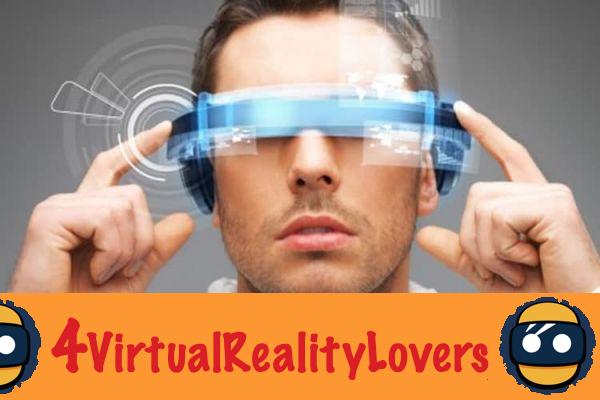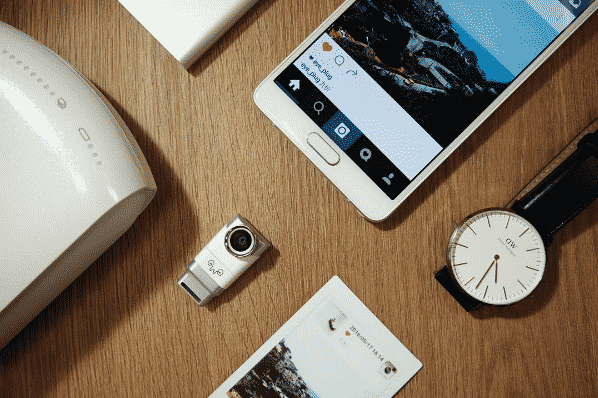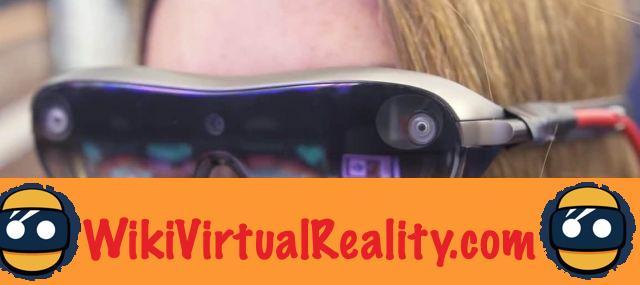
Summary
- Definition of smart glasses
- Definition of augmented reality glasses
- Definition of mixed reality glasses
- Why so much confusion between smart glasses and augmented reality glasses?
Since 2017, many smart frames have been released on the market, often aimed at a professional audience. 2018 will also see several particularly notable releases such as the Magic Leap One glasses. There is great confusion between the different terms, out of ignorance or out of interest. It was therefore essential to take stock of the subject through this dossier. We explain the main differences between these terms and the main products that exist and what they are capable of..

Definition of smart glasses
Often mistakenly referred to as augmented reality glasses, smart glasses are a wearable device that comes in the form of a pair of glasses. These are able to give information to the usersuch as text messages, your heart rate, the name of an incoming phone call, navigation instructions, etc. This is usually simple information. Smart glasses ensure the user does not have to look away when they have to focus their attention to receive information. Some models, which are not actually smart glasses, allow a photo or video to be taken, for example Snapchat's Spectacle glasses. They are considered by some to be smart glasses because they are equipped with electronics, but are not really because they do not add information for the user.
Google Glass, the pioneer of smart glasses, have often been wrongly called augmented reality glasses. Smart glasses project information into a small, floating screen. However, projecting information does not mean that the information "increases your reality"..
Some examples of smart glasses:
- Raptor Everysight
- Intel Vaunt
- Google Glass
What are smart glasses used for?
Smart glasses have multiple applications. They are widely used by professionals to obtain information without having to consult a manual, for example on assembly lines or for equipment maintenance. Smart glasses are also widely used for navigation. This allows you to see your route, in real time, without having to take your eyes off the road. They are also used by some athletes to obtain information.

Definition of augmented reality glasses
Augmented reality glasses go much further than what smart glasses offer. Their function is really to increase reality and add virtual reality to the environment.. Augmented reality glasses can sense your surroundings and add videos or holograms to it in addition to information. This therefore allows you to add a fictitious world to the reality around you. Augmented reality glasses often come in the form of a headset in order to achieve a much wider field of view. Much more complex hardware with cameras, depth sensors and a processor is essential. The only notable exception are the Magic Leap One glasses, which come in the form of real glasses but require the wearing, on the belt, of an additional computing device..
Some examples of augmented reality glasses:
- Microsoft HoloLens
- Meta 2
- Magic Leap One
What are augmented reality glasses used for?
Augmented reality glasses also have multiple applications. Augmented reality glasses are used for education but also for entertainment since augmented reality games exist. Augmented reality glasses are also increasingly used in the field of architecture and design. Some army corps also use them. They are also used by many professionals and industrialists to get much more information in real time. Ultimately, according to the promises of some manufacturers such as Magic Leap, they will make it possible to achieve a large number of things and replace a computer.

Definition of mixed reality glasses
Mixed reality adds virtual elements to the environment, usually in the form of holograms. This is a term launched by Microsoft that corresponds, in the context of glasses, to the same thing as augmented reality glasses. The term mixed reality finds its difference especially with virtual reality headsets which use a camera to show the environment and add virtual elements to it. For glasses, augmented reality and mixed reality are therefore the same thing..
Why so much confusion between smart glasses and augmented reality glasses?
Confusion between the two terms often comes from journalists unfamiliar with the technology. and who, through abuse of language, use the inappropriate term. It is also a confusion cleverly maintained by some manufacturers. Selling augmented reality glasses sells more than smart glasses especially since smart glasses often have very limited augmented reality functionalities, thus allowing some manufacturers to talk about augmented reality. This is the case, for example, with Google Glass, even if the search engine giant has always refrained from talking about augmented reality glasses to define its product at the time.
Google Glass was also the source of the confusion of terms.. These smart glasses, pioneering and far ahead of their time, hinted at upcoming augmented reality features confusing the minds of journalists. It did not happen and the Google Glass project was abandoned due to privacy concerns. The project was then relaunched by Google but, this time, geared towards professionals.





![[GOOD TIP] The DJI Mavic Air drone at only 970 euros 🔥](/images/posts/508c7088bbc439b2faabf0ee3721dc83-0.jpg)
![[WWDC 2017] Mac VR: Apple computers running macOS High Sierra compatible with HTC Vive](/images/posts/1efe8a66c6dc80ec888133efad603474-0.jpg)
![[Review] Augmented Empire - A fascinating cyberpunk tactical RPG on Samsung Gear VR](/images/posts/e59f79c2980c7163a7cfe93c1a40e553-0.jpg)


















